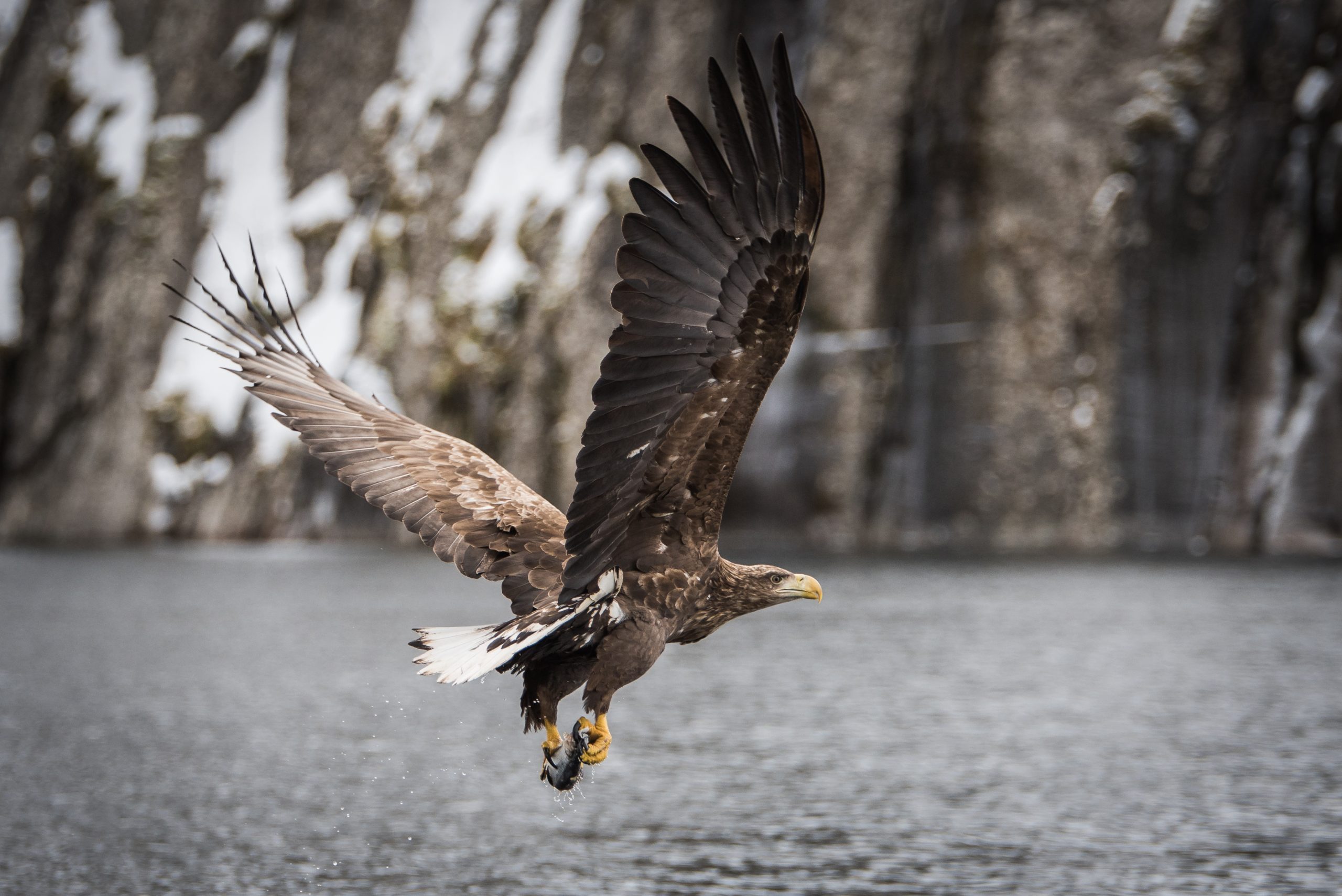The white-tailed eagles (Haliaeëtus albicilla), also known as the sea eagles, are Norway’s largest bird of prey. With a distinctive white tail and a wingspan of up to 2.4 meters, these majestic birds might appear untouchable when gliding high up in the sky or sitting on steep mountain faces. Therefore, it might surprise many to learn that eagle hunting was a tradition for centuries in Norway, most notably in the small island of Værøy in Lofoten.
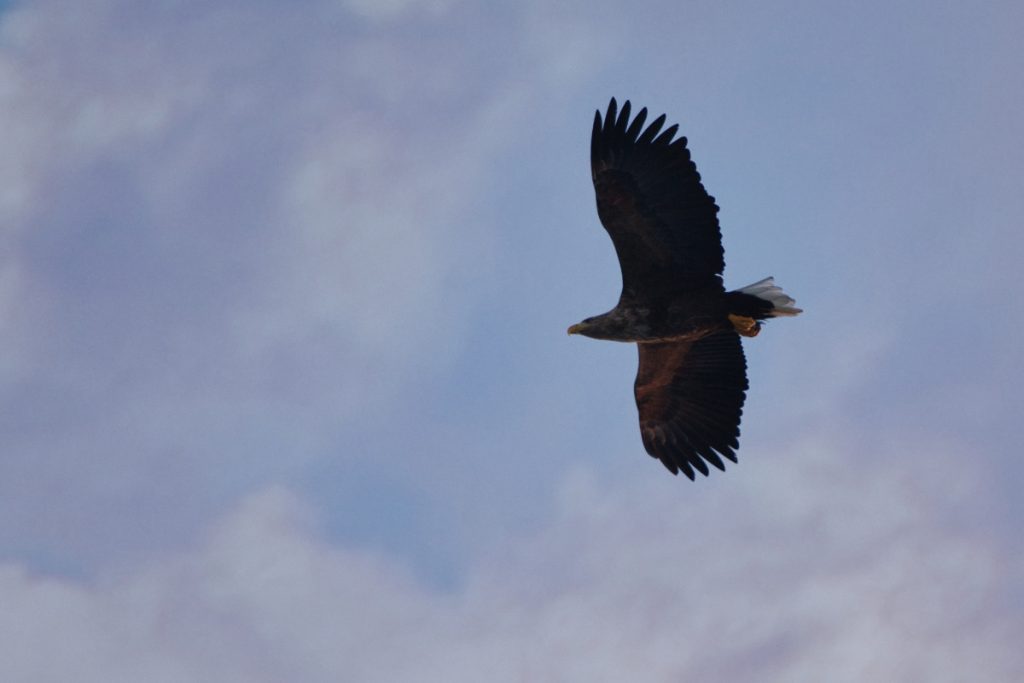
A TRADITION THAT GOES LONG BACK
There were rumors of Norwegian eagle hunters catching eagles with their bare hands that reached even outside of Norway. Italian priest Francesco Negri, the first person we know of who traveled to the North Cape, visited Værøy in 1665 to see if there was some truth to these wild claims. It surprised him to discover that it was all true. His report, describing the hunting method, is the first written record of eagle hunting in Lofoten.

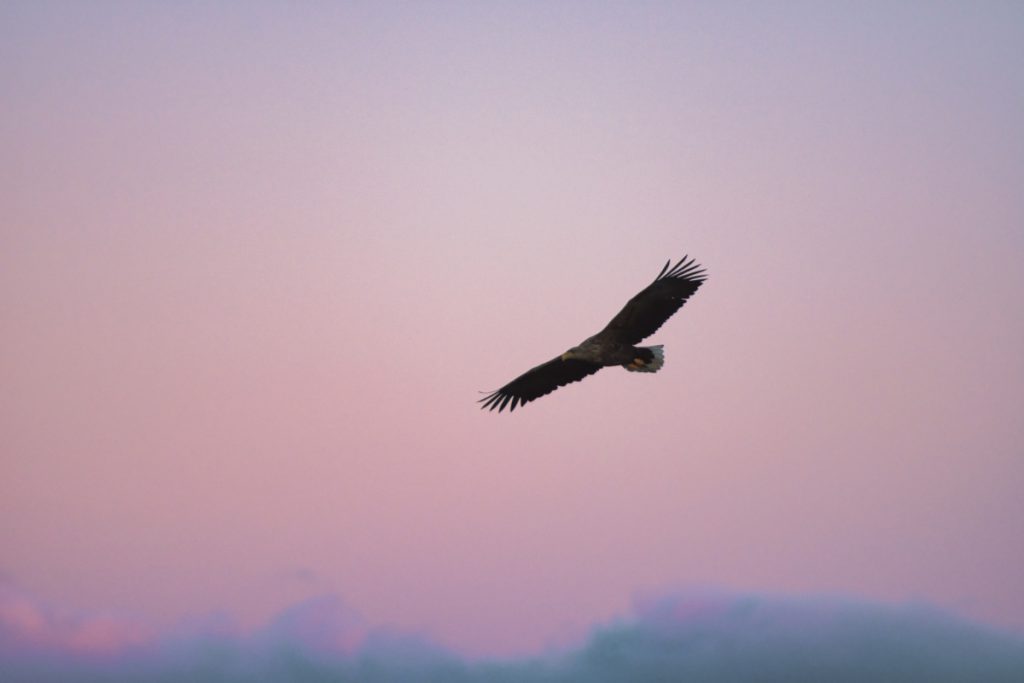
ERADICATING PREDATORS FROM NORWEGIAN NATURE
The tradition of eagle hunting had survived for many centuries. In fact, in 1845, a new hunting law was introduced. The aim of the law was, among other things, to eradicate all the major predator species from Norwegian nature, including sea eagles and golden eagles. The purpose of eagle hunting was primarily to limit the population and prevent the eagles from attacking the sheep that were outdoors all year. On top of that, the handsome sum that hunters received for each killed eagle added to the fisheries’ income.


SEA EAGLE FACTS:
Length: 65 to 95 cm
Weight: 3 to 7 kg
Wing Span: 1.8 – 2.4 m
Length of life: 20 to 25 years
HUNTING SEA EAGLES WITH BARE HANDS
The eagle hunt took place on cold dark days during the late autumn. First, the hunters went to the mountains and hid in narrow stone huts called eagle houses. There they laid bait with sheep intestines tied to a rope, and then they waited patiently until an eagle landed and started to eat. Then, while the eagle was eating, they pulled the rope carefully closer towards the eagle house. Finally, when it was so close that the hunter could stick his hand out of the hut and grab the bird’s claws, he dragged the eagle into the shed and killed it.


SEA EAGLES CLOSE TO EXTINCTION
The eagle hunters cut the claws off the eagle and brought them to the local bailiff. They received a couple of kroner (NOK) per eagle, which was quite a significant amount of money at the time. Since the bailiff only needed the claws to pay the bounty, the eagle catchers used the eagle wings as broomsticks or sold them for about 50 øre.
After centuries of hunting sea eagles and golden eagles in Norway with firearms, poison, and nest looting, the eagle population came to a historic low. Only in 1951, hunters managed to kill 4,620 eagles in Norway; out of these, 90 eagles were caught at the small island of Værøy.
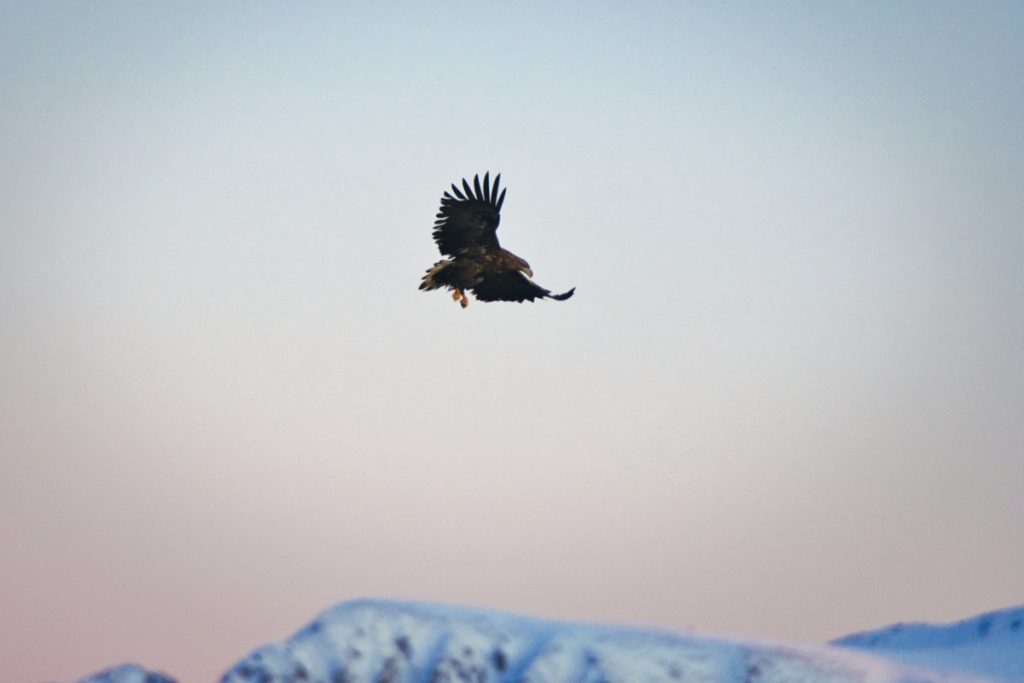
SEA EAGLE FACTS:
White-tailed eagles are monogamous, and pairs mate for life. The eagles’ nests are usually huge, constructed of sticks and branches, and lined variously with moss, greenery, seaweed, or wool. The female will lay 1 to 3 eggs per year in March or April. The incubation, performed by both adults, takes about 40 days.
Hatchlings can move around the nest ten days after hatching and fledge at 70-80 days of age. They become independent 1 or 2 months later and reach reproductive maturity at 5 to 6 years.
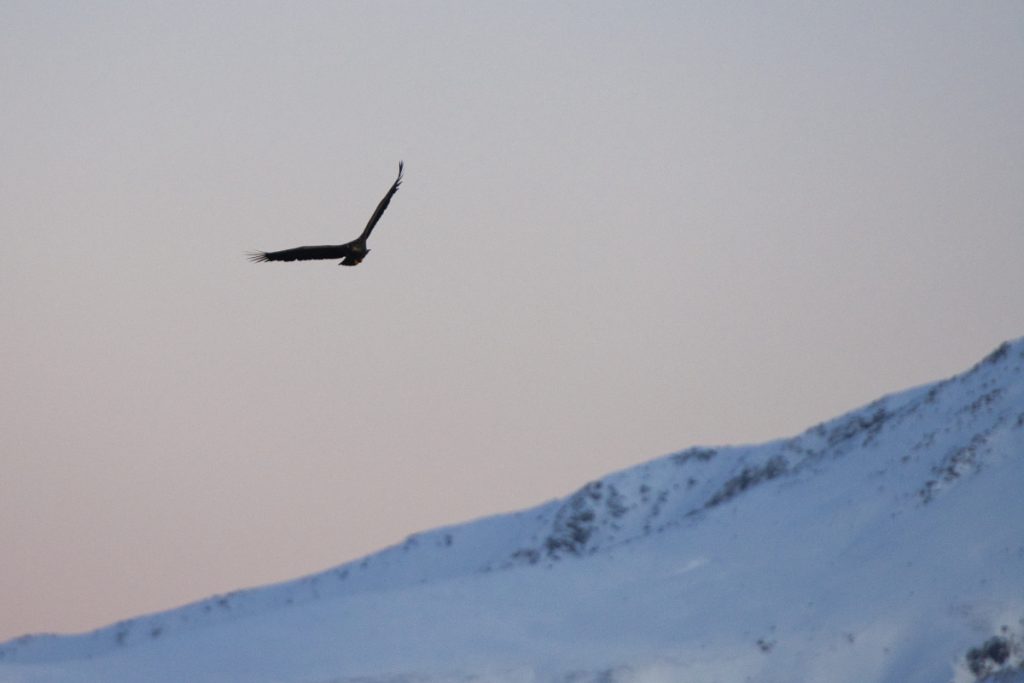
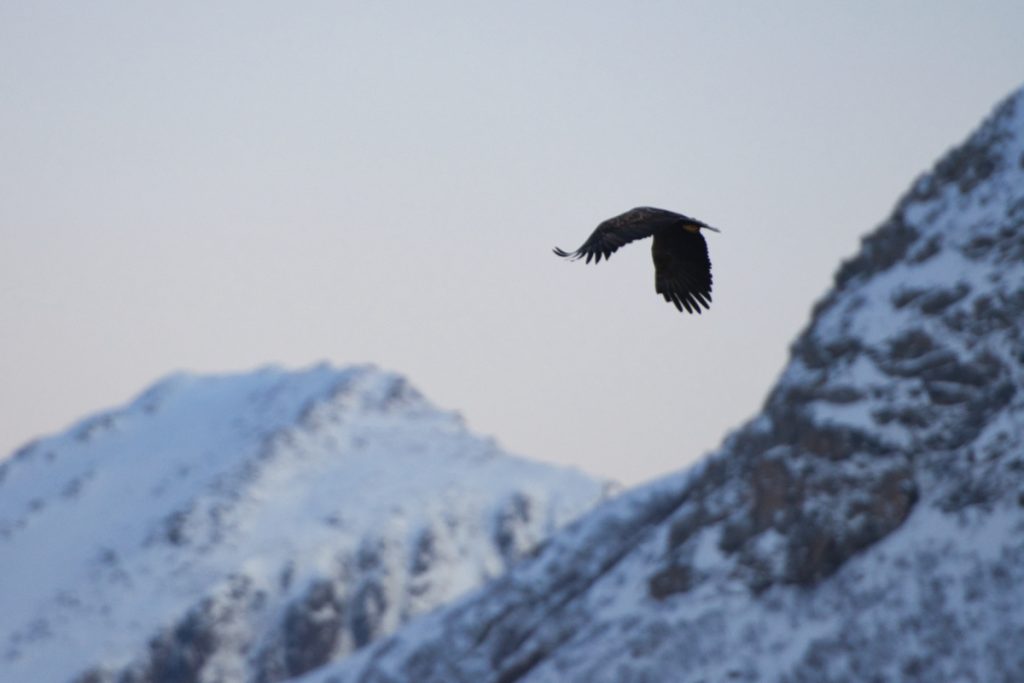
SAVED BY THE LAW IN 1968
In 1968 a law protecting these majestic birds was issued. Unfortunately, by that time, the sea eagles were extinct along the coast from Hordaland to the Swedish border, and their numbers in the southern populations were also significantly reduced. Back then, Norway’s overall population of sea eagles was probably below 800 pairs.
The protection of the white-tailed eagle is one of the most incredible nature conservation successes of all time in Norway. Despite the white-tailed sea eagle being a slow-reproducing bird of prey, the estimated population of sea eagles in Norway increased to 3,500 breeding pairs in 2008. Nordland county, where you find Lofoten islands, is the world’s most important nesting area for sea eagles. The county has more than 35% of Norway’s sea eagle population and thus almost 20% of the world’s sea eagle population.
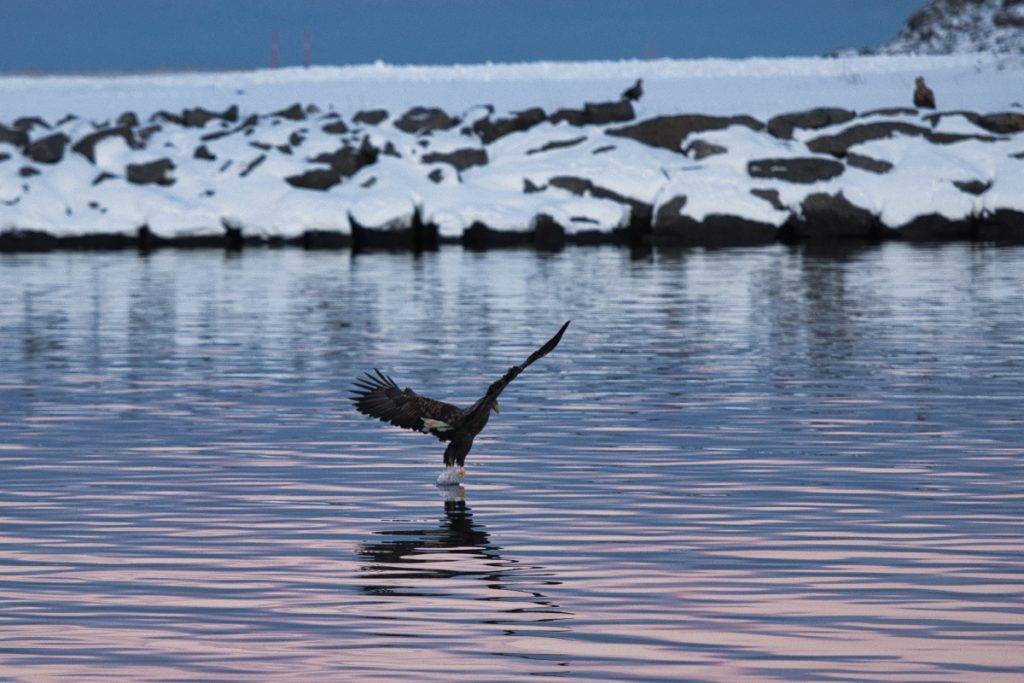
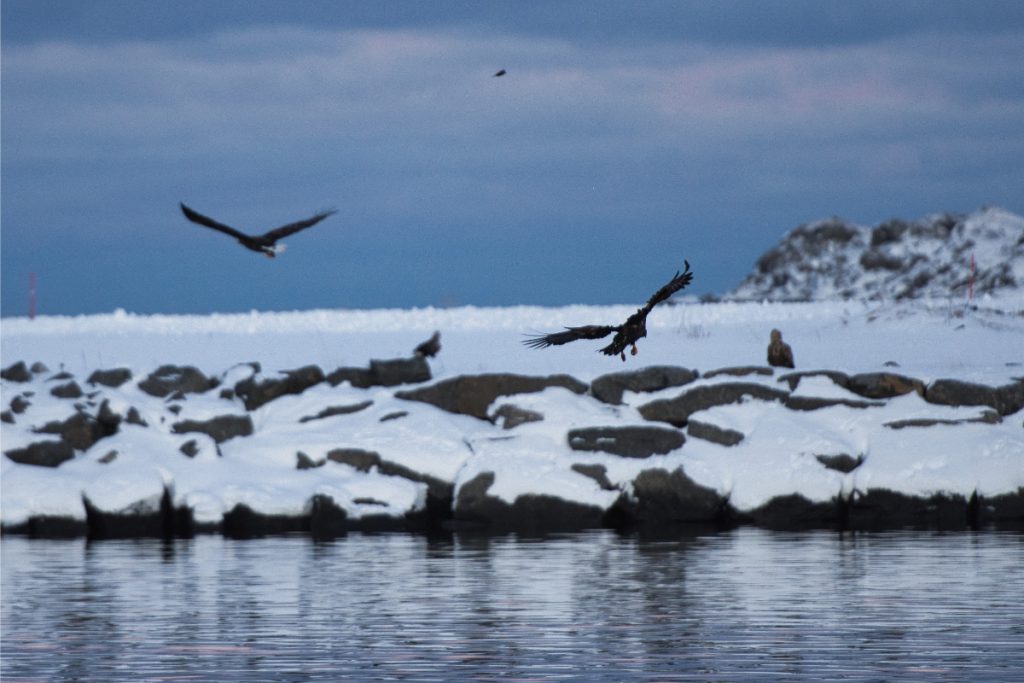
SEA EAGLE SAFARI IN LOFOTEN
Many tourists believe that meeting the eagle is the absolute highlight of their Norway holiday. Therefore, sea eagle safaris have become a popular tourist attraction in several places along the coast. For example, in Lofoten, there is a large population of sea eagles in Raftsundet that you can visit on an organized boat trip to the world-famous Trollfjorden.
SAFE AND SOUND?
It might sound like the eagle population could again soar (pun intended) to new heights now that they are protected from hunting and cherished by the tourist industry. But, sadly, the story does not end here. Norway’s abundant wind farm development along its windy coastline has started to pose a new threat to the eagles in recent years. Every year, several birds die in collisions with the fast-moving blades of the turbines.
In addition, the recent decline in other bird species (e.g., eider ducks) has been blamed on the growing sea eagle populations. It has come so far that some Norwegian politicians have suggested lifting the hunting ban on sea eagles to keep their population at a manageable level.
Despite all of this, the sea eagle remains an important symbol and icon for the rugged Norwegian wilderness that will not be tamed no matter the struggle. The sea eagle is here to stay!
DID YOU LIKE IT? PIN IT!


Related posts
-
The North Sea Route: Hidden Gem on the Southern Coast of Norway
The North Sea Route (Nordsjøruta) is a road that stretches along the south coast of…
-
The Best Thing About Spring in Norway? Fruit Blossoming in Hardanger!
I have always loved spring in Norway. No, not the time when you think that…
-
Skageflå Mountain Farm: The Most Beautiful Hike in Geirangerfjord
Norway has many beautiful places and even more amazing hiking possibilities. Therefore it was not…
